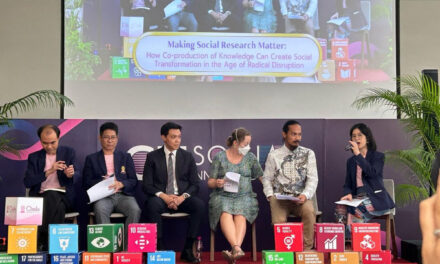Published by Dialogue. To download the full text click here
The article argues that simply adding new goals (such as peace, security, and human rights) to the post-2015 agenda is not enough; there needs to be a focus on the structural and policy factors that perpetuate poverty, in particular to ensure that the future development agenda is not hijacked by a resurrected Washington Consensus. It goes on to propose a 7-point agenda: climate stabilization, financial re-regulation and debt cancellation, inequality reduction, food security, de-commodification, comprehensive social protection, and industrialization
This article seeks to address two issues: (1) how to assess the Millennium Development Goals (MDG) process that is concluding; and (2) what paradigm or framework, if any, should guide development analysis after 2015. It argues that the aim of the MDG assessment must not be limited to calculating the reduction in poverty levels, but to understanding and helping overcome the structural causes of poverty and underdevelopment. Failure to do so can allow the post-2015 development discussions to be hijacked by people with ideological agendas, especially the advocates of the much-criticized Washington Consensus.
In short, focusing exclusively on the performance of MDG indicators tells us little about structural and policy factors that either perpetuate or reduce poverty. Was the poverty reduction observed in the last five years because of pro-globalization policies? Anti-globalization policies? Did the activities of states that endorsed the accord, in fact, have anything to do with poverty reduction, if they set such programmes in motion in the first place? Many, if not most, developing country governments simply paid the usual rhetorical acknowledgment of the importance of the MDGs.
This is not to say that the MDG exercise had little value. It had great value, not in terms of disseminating an analysis of the causes of poverty, hunger, gender inequity, maternal mortality, and environmental crises, but in creating moral outrage globally at the persistence of these conditions and making people question governments and global institutions on their efforts to eradicate them. The embrace of the MDGs by governments and international bodies was, to a significant degree, a defensive response and a strategy of obfuscating the structural sources of these manifestations of social injustice. For this reason, it is useful not only to maintain the MDGs for the next 15-year period, but to complement this approach with a critical exercise in development assessment that would provide an analytical framework for understanding the structural sources of poverty, inequality, and marginalization, and promote a development agenda that would address them.









